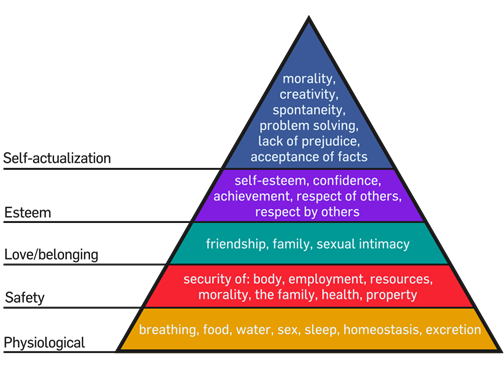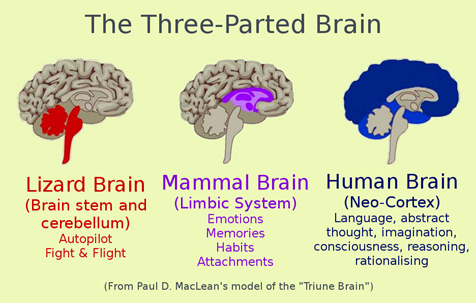Managing Resistance to Change
Everyone knows the theory, everyone knows what to do, but the subject is constantly brought to the table when deploying IT projects.
Have you ever had the impression that you were being told anything when faced with a simple prerogative in the progress of a project? That you were being served illogical comments about your structured approach? Comments that were not fundamentally focused on constructive dynamics and advancement of the project? If so, rest assured, you are not the only manager in this situation.
Our experience as ERP specialists invariably leads us to the following observation: at least 50% of the ERP project manager’s challenges comprise psychological aspects (change management), the remaining proportion addressing operational issues (processes).
The phenomenon has been known for a long time: resistance to change.
Forms of Resistance to Change
- Confrontation
Represents a rejection to comply when facing change - Reject
Represents a feeling of anxiety when facing change - Avoidance
Represents a lack of motivation when facing change - Feint
Represents a pretence to commit when facing change
To properly target what we are talking about here, note that everyone may make mistakes. Seeing that you are wrong and adjusting accordingly does not make up resistance to change. It is simply current project management.
Also, it is not the aim to review the forms of resistance to change (regarding the four bullet points above) but to highlight the fundamental causes of the phenomenon.
A good understanding of the psychological dynamics related to it will allow you to define a deployment approach that reduces its impacts. The deployment of your IT projects, and your business, will only become more optimal in terms of costs and delivery times.
The Human, the Human … Still the Human
Many are convinced of the absolute superiority of the man over animals. Yet, we share significant commonalities with our friends. Let’s just think of the fear which is closely linked to the instinct for survival.
Human psychology is complex. In this regard, I invite you to read Maslow‘s famous pyramid of needs as a basic reference.
To remain grounded, first let’s try to define the process of creation, of the progressive rising of resistance to change. To this end, I suggest the following reflection:
- Every human being needs a meaning, to feel useful. It is a question of mental well-being, therefore, of survival.
- To feel useful, to see meaning in our work, comes in large part with the feeling of competence.
- But not knowing what to say or what to do triggers a feeling of incompetence.
- No one can accept that they are not good, that they feel incompetent and useless for a long time.
- The envisaged consequences of their incompetence, such as possibly losing their job or their power, generate uncertainty.
- However, uncertainty in the face of the unknown, the new technology, the new way of doing things, generates fear.
- Intense fear triggers defensive or aggressive behaviour.
- A person who is afraid seeks to suppress the stimuli that cause their discomfort (question of survival).
- The reflex becomes more instinctive and emotional than Cartesian, the reactions, the gestures then become incoherent.
- There is then a phenomenon of acute resistance.
Take this reflection pattern and apply it to your resistance issues in ongoing projects. You are very likely to ultimately identify a “fear” component in the most problematic resources.
Fear of disappointment, fear of falling short, fear of being seen as incompetent, fear of saying we haven’t understood, fear of losing power and credibility, etc. Here is a set of reasons that can be expressed.
A person who finds himself in a situation of great uncertainty, or fear, may experience what is called a phenomenon of cognitive dissonance. It is about the behaviour of a person going against what they are expressing. For example, the fact of taking actions that contradict a thought confirmed in a project management meeting. An illogical reaction… at least in appearance.
Not all people automatically enter into a phenomenon of cognitive dissonance in a situation of great uncertainty. It depends on several factors, including the self-confidence present at the start.
But when the phenomenon appears, it is a matter of more complex situations to manage and which require more skill. It is, therefore, important to understand what is happening at the basis among the concerned stakeholders.
I suggest you relate this piece of the puzzle to the theory of the triune brain, a three-parted brain inherited from the progressive evolution of man.
Contested by some scientists, this model allows me to introduce the supremacy of reaction by instinct, by emotion and not by the rational of the human being when he experiences a strong feeling of fear.
The key here is to understand that there is a hierarchy in the layer that controls the behaviour of a human being depending on the situation being experienced. For example, you are hungry, instinct will take over. You are going through great pain, no need to tell yourself to take charge and be logical, it is the limbic and the emotion that dictate your behaviour.
In short, when a person is uncertain, insecure, and afraid, it is no longer the rational, the Cartesian logic that leads. The instinct and emotion then dictate their actions and words, hence the illogical reactions sometimes perceived as a project manager.
How to take this dynamic into account in project management?
The previous theoretical explanations were necessary to support my recommendations to the project manager facing critical situations of resistance to change. Here are my suggestions:
- Quickly realize that your main issue in the project’s course has shifted from a technical/operational aspect to a psychological one. Develop tips to rapidly detect that the path of the project has just shifted into another universe, that of emotion.
Example: When in doubt, increase the frequency and reduce the duration of the meetings. By targeting small advances for each meeting, you will find much earlier that there is a demobilization of a person or a team if the small advances in question are not made. - Do not insist on dealing with an emotional situation using Cartesian method. Do not use a Gantt or Pert chart to insist on adjustments to resolve a blockage. Don’t talk about project engineering to solve a human issue.
As the main issue in a project shifts to the human side, work instead on understanding the origins of the dissonance you are measuring. Most likely there are people afraid of something. Identify these people, identify the source of their fears. Chat with them, not directly related to the progress of the project, but rather about what worries them personally and prevents them from actively taking part in a great adventure. If necessary, in more acute cases, get support from the HR department or a psychologist.
- Your patience can be very limited during times of intense and critical project management. You can become quickly frustrated with a behaviour illogical to you. However, remain calm and collected in the tone you take with the affected stakeholders. Understand that the more you adopt an aggressive, dictatorial or very pragmatic behaviour, the more you will confirm to your interlocutor they are right to feel uncertain, to be afraid of something, something that they may not even have considered. Your goal is not to amplify a problem, but to solve it.
- If this turns out to be possible depending on the nature and stage of the project, use the most problematic stakeholders to turn them into an operational hub, by reference, to turn them into informal leaders in your project.
The people who are the most resistant to change are usually the more expressive, the most emotional and outgoing, those who often or could be in informal leadership within their team. The reason is simple: it is their leadership or their power that can be threatened by a new technology or a new way of doing things. By giving them the chance to influence the progress of the project, by giving them relevant power, these actors often turn into a real engine of reaction that propels the project forward.
As I reiterate whenever I can, technology is a means and not a solution. The best technology in the world cannot improve your business productivity if your team has not made full use of it. In this perceptual, the key is to ensure the positive participation of all and, therefore, to deal quickly and effectively with any issue of resistance that may arise during the project.
Good management.

